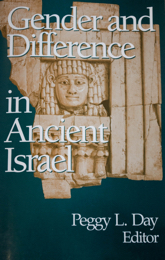Dr. Peggy Day
 Title: Professor Emerita
Title: Professor Emerita
Email: p.day@uwinnipeg.ca
Biography:
Dr. Peggy L. Day earned her PhD in 1986 from Harvard University, Department of Near Eastern Languages and Civilizations, majoring in Hebrew Bible. Her first academic position was at the University of Toronto, Trinity College, an affiliate of the Toronto School of Theology (TST). When she began at Trinity in 1986 she was the only woman among TST’s approximately 25 Bible professors, yet the majority of TST’s students were female and many were grassroots feminists. At this time there was very little feminist scholarship in the field of Hebrew Bible upon which these students could draw. Dr. Day made a contribution to remedying this gap with the 1989 publication of Gender and Difference in Ancient Israel. In 1991 she was selected as one of the inaugural members of the Society of Biblical Literature’s Committee on Women in the Profession, and eventually became that committee’s co-chair (1994-8). She has published several articles on the northwest Semitic warrior goddess Anat as well as numerous articles on various Hebrew Bible texts that personify ancient Near Eastern cities as licentious, adulterous women. She has taught in the Religion & Culture Department at the University of Winnipeg for the past 26 years, and was that Department’s Chair from 1999-2010 and a Full Professor since 1999. She lives in Winnipeg, Canada, with her partner Steve Baker and their three very spoiled cats.
Teaching Areas:
Hebrew Bible; History of Ancient Israel; Modern Biblical Interpretation; Women in Ancient Israel; Myth, Legend and Folktale; Biblical Hebrew language.
Research Interests:
Hebrew Bible; Women in Ancient Israel.
Publications:
 “’Until I Come and Take You Away to a Land Like Your Own:’ A Gendered Look at Siege Warfare and Mass Deportation,” Stephanie Budin and Jean Turfa (eds.) Women in Antiquity: Real Women Across the Ancient World. London: Routledge, forthcoming.
“’Until I Come and Take You Away to a Land Like Your Own:’ A Gendered Look at Siege Warfare and Mass Deportation,” Stephanie Budin and Jean Turfa (eds.) Women in Antiquity: Real Women Across the Ancient World. London: Routledge, forthcoming.
“Is the Language of Child Sacrifice Used Figuratively in Ezekiel 16?” Daphna Arbel et al. (eds.) Not Sparing the Child: Human Sacrifice in the Ancient World and Beyond. New York: Bloomsbury T and T Clark, 2014, 91-113.
“Deity: Hebrew Bible,” Julia O’Brien et al. (eds.) The Oxford Encyclopedia of the Bible and Gender Studies, 2 vols.. New York: Oxford University Press, 2014, vol. 1, 74-80.
“Yahweh’s Broken Marriages as Metaphoric Vehicle in the Hebrew Bible Prophets,” Martti Nissinen and Risto Uro (eds.), Sacred Marriages: The Divine-Human Sexual Metaphor from Sumer to Early Christianity. Wionona Lake: Eisenbrauns, 2008, 219-41.
“A Prostitute Unlike Women: Whoring as Metaphoric Vehicle for Foreign Alliances,” Brad Kelle and Megan Moore (eds.), in Israel’s Prophets and Israel’s Past: Essays on the Relationship of Prophetic Texts and Israelite History in Honor of John H. Hayes. New York: T and T Clarke, 2006, 164-70.
“Metaphor and Social Reality: Isaiah 23: 17-18, Ezekiel 16: 35-37 and Hosea 2: 4-5,” J. Kaltner and L. Stulman (eds,), Inspired Speech: Prophecy in the Ancient Near East--Essays in Honor of Herbert B. Huffmon. T and T Clark, 2004, 63-71.
“Dies Diem Docet: The Decipherment of Ugaritic,” Studi Epigrafici e Linguistici 19 (2002) 37-57.
“Ugaritic,” S. McKenzie and J. Kaltner (eds.), Beyond Babel: A Handbook for Biblical Hebrew and Related Languages. Atlanta: SBL, 2002, 223-41.
